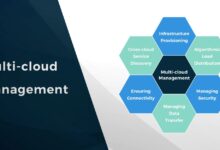Cloud migration tools: Top 7 Cloud Migration Tools: Ultimate Power Guide for 2024
Thinking about moving your business to the cloud? You’re not alone. With digital transformation accelerating, the right cloud migration tools can make or break your journey. Let’s explore the most powerful solutions shaping the future of enterprise mobility.
Understanding Cloud Migration and Why It Matters

Cloud migration is no longer a luxury—it’s a necessity. Organizations across industries are shifting from on-premises infrastructure to cloud environments to gain agility, scalability, and cost-efficiency. But moving applications, data, and workloads isn’t as simple as flipping a switch. That’s where cloud migration tools come in, acting as the backbone of a seamless transition.
What Is Cloud Migration?
Cloud migration refers to the process of moving digital assets—such as data, applications, and IT processes—from on-premises servers or legacy systems to a cloud computing environment. This can involve public clouds like AWS, Microsoft Azure, or Google Cloud Platform, or even hybrid and multi-cloud setups.
The migration process varies in complexity depending on the scale, architecture, and type of workload. From simple data backups to full-scale enterprise application rehosting, each scenario demands precision and the right set of cloud migration tools.
Types of Cloud Migration Strategies
Not all migrations are created equal. Depending on your goals, you might adopt one or more of the following strategies:
Rehosting (Lift and Shift): Moving applications to the cloud without modifying their architecture.Fast but may not optimize cloud benefits.Replatforming: Making minor optimizations during migration, such as switching to managed databases.Refactoring (Re-architecting): Redesigning applications to fully leverage cloud-native features like serverless computing.Repurchasing: Switching to a different product, often SaaS-based, instead of migrating the existing app..
Retiring: Decommissioning legacy systems that are no longer needed.Retaining: Keeping certain systems on-premises due to compliance, cost, or technical constraints.”The cloud is not about where you run IT, it’s about how you run IT.” — Satya Nadella, CEO of Microsoft
The Role of Cloud Migration Tools
Cloud migration tools automate, streamline, and secure the transition process.They help assess current infrastructure, plan migration paths, execute data transfers, and monitor post-migration performance.Without them, organizations risk downtime, data loss, security breaches, and budget overruns..
These tools provide critical capabilities such as discovery and dependency mapping, workload prioritization, cost estimation, and real-time monitoring. They also support compliance with industry standards like GDPR, HIPAA, and SOC 2.
Top 7 Cloud Migration Tools for 2024
Choosing the right cloud migration tools can dramatically reduce risk and accelerate time-to-value. Below is a curated list of the seven most powerful and widely adopted tools in the market today, each offering unique strengths for different migration scenarios.
1. AWS Migration Hub
Amazon Web Services (AWS) Migration Hub is a centralized console that allows you to track the progress of your application migrations across multiple AWS and partner solutions. It provides visibility into your entire migration journey, from discovery to cutover.
Key features include:
- Unified dashboard for tracking migration status
- Integration with AWS Application Discovery Service
- Support for both agent-based and agentless discovery
- Automated assessment reports for TCO and performance
AWS Migration Hub works seamlessly with other AWS services like Server Migration Service (SMS), Database Migration Service (DMS), and EC2 Elastic Inference. It’s ideal for enterprises already invested in the AWS ecosystem.
Learn more: AWS Migration Hub Official Page
2. Microsoft Azure Migrate
Azure Migrate is Microsoft’s comprehensive solution for assessing and migrating on-premises workloads to Azure. It supports servers, databases, apps, and virtual desktops with minimal disruption.
Its modular architecture includes:
- Server Assessment and Migration
- Database Migration Service
- VMware to Azure migration
- Hyper-V to Azure migration
- Web App migration
Azure Migrate uses an agentless approach for discovery and dependency mapping, reducing overhead. It also provides cost forecasting and performance-based sizing recommendations.
For organizations using Microsoft technologies like Active Directory, SQL Server, or Windows Server, Azure Migrate offers deep integration and simplified licensing models.
Explore further: Microsoft Azure Migrate
3. Google Cloud Migrate for Compute Engine
Formerly known as Live Migration, Google Cloud Migrate enables seamless, zero-downtime migration of virtual machines from on-premises or other clouds to Google Cloud Platform (GCP).
It supports:
- VMware vSphere environments
- Physical servers
- Other public clouds (like AWS and Azure)
- Windows and Linux workloads
One of its standout features is continuous replication, allowing you to test migrated VMs before cutting over. This minimizes risk and ensures business continuity.
Google Cloud Migrate integrates with Google’s robust networking, security, and AI/ML tools, making it a strong choice for data-driven organizations.
Visit: Google Cloud Migrate for Compute Engine
4. VMware HCX
VMware HCX (Hybrid Cloud Extension) is a powerful platform for migrating and extending data centers to the cloud, especially for VMware-based environments.
It enables:
- Live migration of VMs with minimal downtime
- Network extension and mobility
- Inter-cloud networking
- Automated bulk migrations
HCX is widely used in partnerships with public cloud providers like AWS (via VMware Cloud on AWS), Azure (Azure VMware Solution), and Google Cloud (Google Cloud VMware Engine). It preserves existing VMware tooling, skills, and policies, reducing retraining costs.
This makes it a top choice for enterprises with large VMware footprints looking for a hybrid or multi-cloud strategy.
More info: VMware HCX Overview
5. CloudEndure Migration
Acquired by AWS in 2019, CloudEndure Migration is a robust, agent-based replication tool that enables near-zero downtime migration of physical, virtual, and cloud-based servers to AWS, Azure, or GCP.
Key advantages include:
- Continuous block-level replication
- Automated machine conversion (P2V, V2V, V2C)
- Staging area testing before cutover
- Support for complex enterprise applications
CloudEndure is particularly effective for migrating legacy systems and mission-critical applications that require high availability during transition.
It integrates with AWS but can also be used for cross-cloud migrations, making it versatile for multi-cloud strategies.
Discover: AWS CloudEndure Migration
6. Turbonomic (now part of IBM)
Turbonomic, now integrated into IBM’s hybrid cloud portfolio, goes beyond basic migration by adding application resource management and economic-driven automation.
It helps with:
- Right-sizing cloud resources pre- and post-migration
- Cost optimization through supply-demand chains
- Performance assurance during migration
- Automated scaling and placement decisions
While not a migration tool in the traditional sense, Turbonomic enhances the effectiveness of other cloud migration tools by ensuring that workloads are placed optimally and cost-effectively.
It’s especially valuable for organizations concerned about cloud sprawl and unpredictable billing after migration.
Learn more: IBM Turbonomic
7. Dell APEX Migration Services
Dell Technologies’ APEX portfolio includes APEX Migration Services, a consultative and tool-assisted approach to cloud migration. It combines automated tools with expert guidance to move workloads to public or private clouds.
Features include:
- Assessment and planning workshops
- Automated discovery and dependency mapping
- Migration execution with minimal downtime
- Post-migration optimization
APEX is ideal for organizations that prefer a managed service model, especially those with complex, heterogeneous IT environments.
Dell’s deep hardware and storage expertise adds value when migrating legacy systems tied to specific infrastructure.
Explore: Dell APEX Migration Services
Key Features to Look for in Cloud Migration Tools
Not all cloud migration tools are created equal. To make an informed decision, you need to evaluate them based on several critical criteria. The best tools don’t just move data—they ensure security, performance, and long-term sustainability.
Discovery and Dependency Mapping
Before migrating, you need a clear picture of your current IT landscape. Discovery tools scan your network to identify servers, applications, databases, and their interdependencies.
Effective dependency mapping helps avoid breaking critical services during migration. For example, moving a database without its dependent application can cause outages. Tools like AWS Application Discovery Service and Azure Migrate offer agentless and agent-based options for comprehensive visibility.
Assessment and Planning Capabilities
A good cloud migration tool should provide detailed assessments, including:
- Compatibility checks
- Performance benchmarks
- Cost estimates (TCO and ROI)
- Recommended instance types and configurations
These insights help prioritize workloads and create a phased migration plan, reducing risk and budget overruns.
Security and Compliance Support
Security must be baked into every phase of migration. Look for tools that offer:
- Encryption in transit and at rest
- Role-based access control (RBAC)
- Audit logging and monitoring
- Compliance with standards like GDPR, HIPAA, PCI-DSS
Tools like Azure Migrate and AWS Migration Hub integrate with native security services (e.g., AWS IAM, Azure Security Center) to enforce policies during and after migration.
How to Choose the Right Cloud Migration Tools for Your Business
Selecting the right cloud migration tools depends on your specific needs, existing infrastructure, and long-term goals. A one-size-fits-all approach rarely works in cloud transformation.
Evaluate Your Current IT Environment
Start by auditing your on-premises systems. Identify:
- Which applications are candidates for migration?
- What are their dependencies?
- Are they cloud-ready or do they need refactoring?
- What are the performance and latency requirements?
Tools like SolarWinds Server & Application Monitor or Paessler PRTG can help gather this data before engaging migration-specific tools.
Define Your Cloud Strategy
Are you going all-in on a single cloud provider, or adopting a multi-cloud or hybrid model? Your strategy will dictate which cloud migration tools are most compatible.
For example:
- If you’re committed to AWS, AWS Migration Hub and CloudEndure are natural choices.
- If you use VMware heavily, VMware HCX offers seamless integration.
- If you’re building a multi-cloud architecture, consider tools with cross-platform support like CloudEndure or Turbonomic.
Consider Total Cost of Ownership (TCO)
While many cloud migration tools are free to start, associated costs can add up—compute instances, storage, data transfer fees, and professional services.
Use TCO calculators from AWS, Azure, and GCP to estimate long-term expenses. Also, factor in:
- Licensing costs (especially for Windows, SQL Server, or Oracle)
- Bandwidth and egress fees
- Staff training and change management
- Post-migration optimization tools
The cheapest tool upfront might not be the most cost-effective in the long run.
Common Challenges in Cloud Migration and How Tools Help Overcome Them
Despite the benefits, cloud migration is fraught with challenges. The right cloud migration tools can mitigate many of these risks, but only if used strategically.
Data Downtime and Loss
Unplanned downtime during migration can cost thousands per minute. Tools with continuous replication—like Google Cloud Migrate and CloudEndure—minimize this risk by allowing you to test the migrated environment before switching over.
They also support rollback capabilities, so if something goes wrong, you can revert quickly.
Performance Degradation
Moving to the cloud doesn’t guarantee better performance. Poorly sized instances or misconfigured networks can lead to slower response times.
Tools like Turbonomic and Azure Migrate provide performance-based recommendations, ensuring your workloads run optimally post-migration.
Security and Compliance Risks
Data in transit is vulnerable. Cloud migration tools must support end-to-end encryption and integrate with your identity and access management systems.
Additionally, ensure your chosen provider complies with industry regulations. AWS, Azure, and GCP all offer compliance dashboards and audit trails.
The Future of Cloud Migration Tools: Trends to Watch
The cloud migration landscape is evolving rapidly. As AI, automation, and edge computing gain traction, so too do the tools that enable seamless transitions.
AI-Powered Migration Planning
Future cloud migration tools will leverage AI to analyze workloads and automatically recommend the best migration path, instance type, and cost-optimized configuration.
For example, IBM’s Turbonomic already uses economic models to simulate supply and demand for IT resources. Expect more tools to adopt predictive analytics for smarter decisions.
Automated Refactoring and Containerization
As organizations move beyond lift-and-shift, tools will increasingly support automated refactoring—converting monolithic apps into microservices and containerizing them using Kubernetes.
Google’s Anthos and AWS App2Container are early examples of this trend, enabling modernization during migration.
Edge-to-Cloud Integration
With the rise of IoT and 5G, data is generated at the edge. Future migration tools will need to handle edge-to-cloud data flows, ensuring low-latency processing and secure transmission.
Solutions like AWS Wavelength and Azure Edge Zones are paving the way, and migration tools will soon integrate with them natively.
Best Practices for Using Cloud Migration Tools Effectively
Having the right tools is only half the battle. To maximize success, follow these best practices when leveraging cloud migration tools.
Start with a Pilot Migration
Don’t migrate your entire data center on day one. Start with a non-critical workload to test your tools, processes, and team readiness.
Use this pilot to:
- Validate performance
- Test rollback procedures
- Train your team
- Refine your migration playbook
Leverage Automation and Orchestration
Manual migrations are error-prone and time-consuming. Use automation features in your cloud migration tools to streamline repetitive tasks like VM replication, network configuration, and security policy application.
Orchestration tools like AWS Step Functions or Azure Logic Apps can coordinate complex migration workflows across multiple systems.
Monitor Post-Migration Performance
The job doesn’t end when the migration is complete. Continuously monitor performance, costs, and security using cloud-native tools like AWS CloudWatch, Azure Monitor, or Google Cloud Operations.
Look for anomalies, optimize resource usage, and ensure SLAs are met.
What are cloud migration tools?
Cloud migration tools are software solutions that help organizations move data, applications, and IT workloads from on-premises environments to the cloud. They automate discovery, assessment, replication, and optimization to ensure a smooth, secure, and cost-effective transition.
Which cloud migration tool is best for AWS?
AWS Migration Hub is the most comprehensive tool for AWS migrations. It integrates with AWS Application Discovery Service, Server Migration Service, and Database Migration Service to provide end-to-end visibility and control.
Can I migrate from one cloud to another?
Yes, tools like CloudEndure, Google Cloud Migrate, and VMware HCX support cross-cloud migrations, allowing you to move workloads from AWS to Azure, or from Azure to GCP, with minimal downtime.
Do cloud migration tools reduce costs?
Yes, when used effectively, cloud migration tools can reduce costs by identifying underutilized resources, optimizing instance sizes, and preventing over-provisioning. They also help avoid costly downtime and data loss.
Is security a concern during cloud migration?
Absolutely. Security is critical during migration. Always use tools that support encryption, access controls, and compliance monitoring. Ensure your team follows zero-trust principles and conducts regular audits.
Cloud migration is a transformative journey that demands the right strategy and tools. From AWS Migration Hub to VMware HCX, the top cloud migration tools of 2024 offer powerful capabilities to simplify, secure, and accelerate your move to the cloud. By understanding your needs, evaluating key features, and following best practices, you can avoid common pitfalls and unlock the full potential of cloud computing. The future is cloud-native—and the right tools will get you there faster, smarter, and safer.
Recommended for you 👇
Further Reading:









